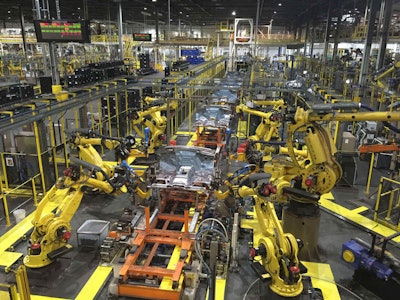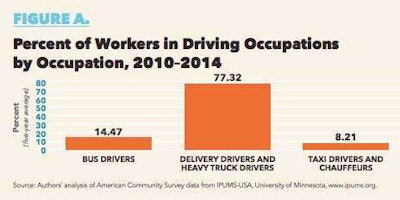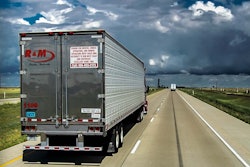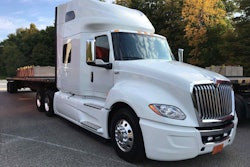 While much of the assembly process at Ford’s Kansas City Assembly plant is automated, the company employs approximately 8,000 workers there.
While much of the assembly process at Ford’s Kansas City Assembly plant is automated, the company employs approximately 8,000 workers there.From being run over by robot trucks to potential increases in freight efficiency – whether you love the idea of autonomous vehicles or hate them – there’s no shortage of naysayers, cheerleaders or fear-mongerers.
The naysayers are the group who claim this technology is more Jetsons than reality and I think this population of people shrinks a little everyday. We should all be able to agree this is probably going to happen. We can debate when, and we’re about to.
The cheerleaders are the ones who comb the headlines daily for results of Otto and Embark tests, and the ones who follow every turn the Google car makes. Optimists by nature, I think this group has set themselves up most for disappointment because the pace of commercialization in this space simply isn’t moving fast enough for them.
I’m somewhere in the middle. I foresee way too many technological and legislative hurdles in both the near and long term for autonomy to be “on the horizon.” I think of it as more “in the pipeline.”
People are afraid of this technology, and have made that pretty clear.
A Tesla has already killed its driver in an at-fault accident, and another accident in Arizona placed Uber’s autonomous program on a brief pause. None of these “self-driving cars” has hit a pedestrian – yet. If or when that happens, that could add years to a rollout.
While Henry Ford was banging away on sheet metal in his garage, most people weren’t clamoring for cars. I haven’t passed a horse on the Interstate in a long time so the public got used to the idea and embraced it. That, too, will happen with autonomy but slower; like pouring molasses through a sieve.
The third group, the fear-mongers, come in two sub-sets: The ones who have watched Christine a few too many times and the ones who predict major economic upheaval.

My prediction on full autonomy (Level 5) doesn’t have the phrase rapid transition anywhere close to it – at least not to the point that it obliterates most of the workforce.
Predicting job losses via automation isn’t exactly betting Buster Douglas to knock out Mike Tyson.
Through the 1950s and into 1960, a heyday for automotive production, about 16.6 percent of working Americans were employed directly or indirectly by the industry.
According to the Auto Alliance, automobile manufacturing currently provides 7.25 million American jobs – about 3.8 percent of private-sector employment.
The employment gap in the nearly 60 years in between are robots.
CGPS claims the number of workers in driving occupations from 2010 to 2014 was 4.1 million. Just more than 3.1 million (about 77.32 percent) are delivery and heavy truck drivers.
If autonomy slashes 4 million jobs, the entire transportation labor force would crash to about 120,000 jobs. Assuming each segment (buses, taxis and trucking) takes a proportionate share of the 97.5 percent loss of jobs, there could be fewer than 80,000 truck driving jobs available in the U.S.
Using the hit taken by automotive manufacturing as a baseline – a process much easier to automate than 3 million 18-wheelers – I can’t foresee autonomous trucks blowing up the labor force anytime soon.
I’m not going to pretend to be an expert on the subject of economics or job losses, but my from-the-hip estimate is something in a range of 10 percent or less and even that will be phased in over a series of many years as trucking graduates through autonomy levels 2, then 3, then 4, then 5.
An autonomous truck doesn’t make the same amount of business sense to John Doe Trucking as it might for UPS or Walmart, and CGPS’s estimated loss of more than 3 million truck driving jobs indicates almost the entire industry goes driverless. That won’t happen rapidly. Maybe ever.
Further, I think many of the jobs lost with larger carriers – who will embrace autonomous capabilities first and most – will remain in trucking but in a different capacity, like logistics and warehousing.
The number of people actually displaced, I am hopeful, will be small.
There’s no arguing that autonomy in trucking is what the techno-guys like to call a “disruptor.” We’re all going to get a new version of reality one day, but I think it will be more a series of uncomfortable adjustments than sweeping reinvention of the industry – at least for the foreseeable future.












